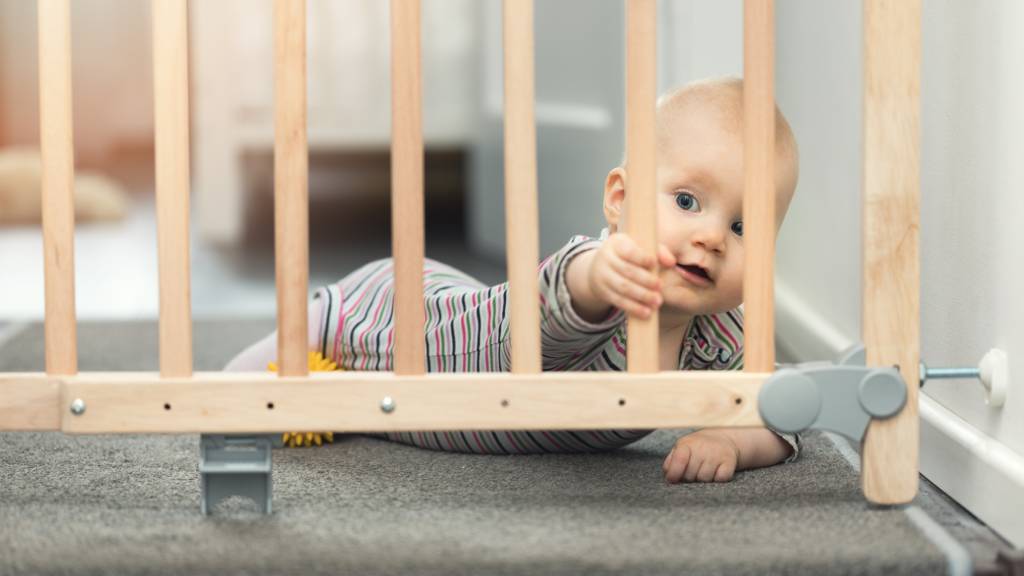How to baby proof your home

Today’s homes offer many stimulating activities for kids, but there are also plenty of potential hazards. How can parents make the house baby proof?
CHOICE’s “Expectant Parents Guide” suggests first making sure there are no sharp edges or protruding points around the home which could cause harm. When buying baby products, it advises checking for Australian standard certification, including sturdy and quality materials, with a five-point safety harness for high chairs and prams.
Must-haves include a safety switch for each power circuit, mains-powered smoke alarms, fire extinguisher, first aid kit, and safety glass for any glass within easy reach of your child. CHOICE also cautions against using baby walkers, which can put your baby in danger quickly and unexpectedly.
Around the home
- Follow the “when eyes are off – hands on” safety rule, keeping at least one hand on your baby when not looking at him or her
- Remove tripping hazards such as cords and toys
- Pad sharp furniture corners with cushions or foam
- Change tables should have ends and sides raised at least 100 millimetres to prevent falls
- Use a safety gate at the top and bottom of stairs
- Check for worn-out electrical appliances and cords
- Have any heaters and fireplaces fixed to the wall, with fireguard screens
- Install a fence and gate around any outdoor pool or spa
- Put sharp tools under lock and key
Balconies
- Keep doors leading to any balconies closed at all times; install safety guards and always supervise your child when on the balcony
- Ensure balcony guardrails are at least one metre high; flat solid walls or narrow vertical bars placed no more than 10 centimetres apart are recommended
- Keep furniture, pot plants and any other objects which could be used for climbing away from the balcony edge
Bathroom/laundry
- Install safety taps and mark hot and cold water taps clearly
- Place cleaning products out of reach or install a child-resistant cabinet or safety lock
- Lower the hot water system’s temperature to 50 degrees Celsius
- Always supervise children aged under 5 years in the bath; check the water temperature is no higher than 38 degrees C and always run cold water first; run only enough water for washing and play (belly-button height) and empty the bath as soon as finished
- Use a non-slip bathmat and non-slip surface in the bath
Bedrooms/living areas
- Attach bookcases and cupboards to the wall; store kid’s things on lower shelves for easy reach
- Install a child-resistant handle or lock on the baby’s room
- Use plastic socket covers in any empty electrical sockets
- Avoid loose floor coverings and put anti-skid mats under rugs
Glass
- Use plastic or shatterproof glass cups
- Put stickers across glass expanses at the same height as your child’s face
- Install safety glass or cover it with sticky plastic film so it doesn’t shatter
Kitchen
- Place sharp items out of reach or in a drawer with a childproof lock
- Use place mats instead of tablecloths, or simply plates
- When cooking, turn saucepan handles towards the back of the stove
- Ensure hot tea and coffee cups are kept well out of reach
Windows
- Lock all windows with window locks or latches; use window guards for screens
- Keep beds, furniture and other climbing objects away from windows
- Use cordless window coverings to prevent strangulation
Don't forget also to review your health and home insurance cover before the new arrival comes. For more information on baby-proofing your home, visit Making home safe for kids or contact your doctor or local medical authority.
12 Feb 2015